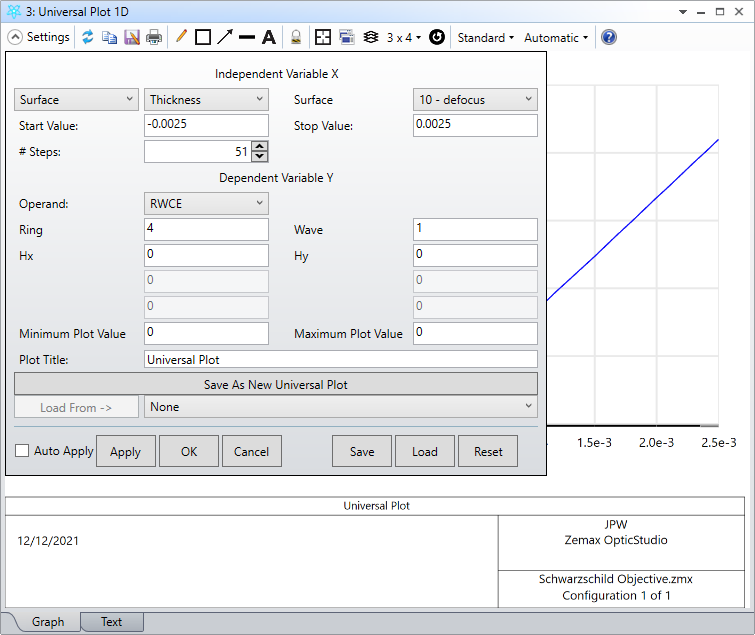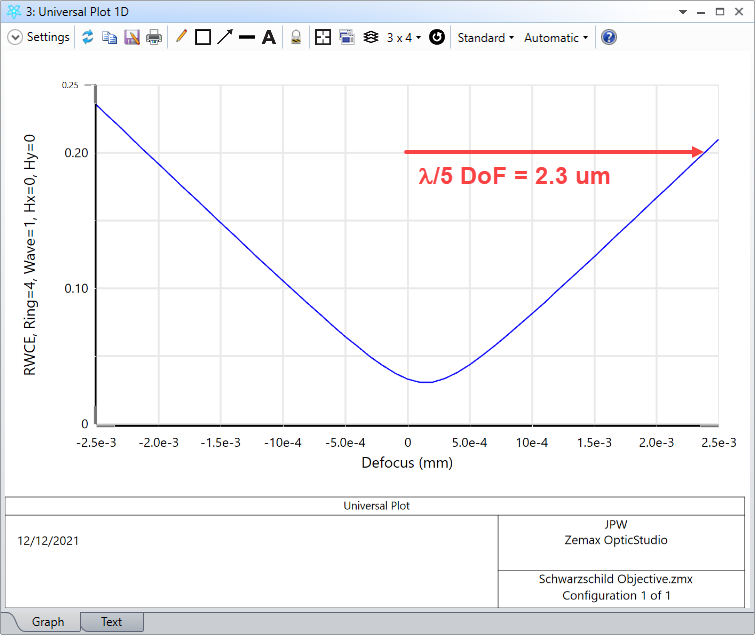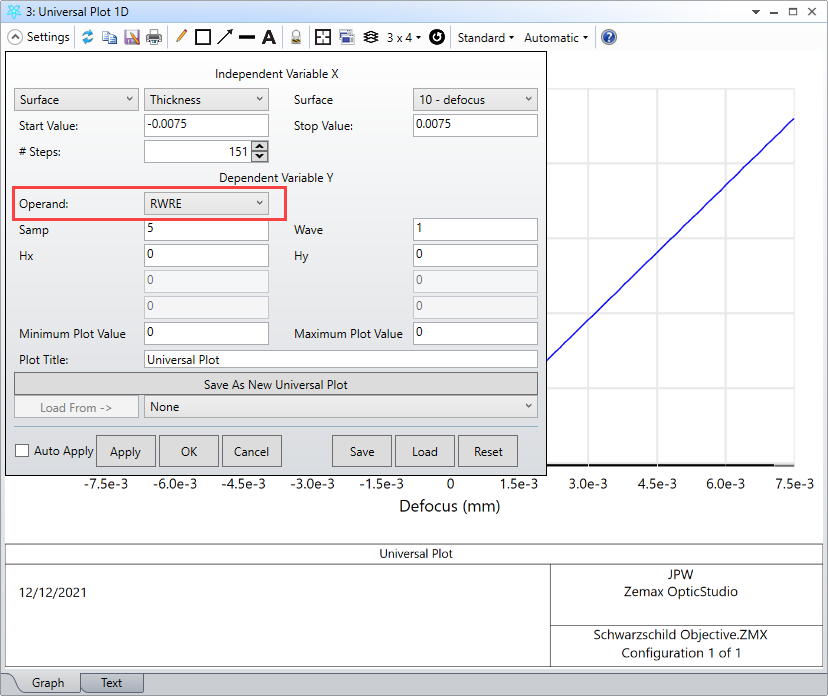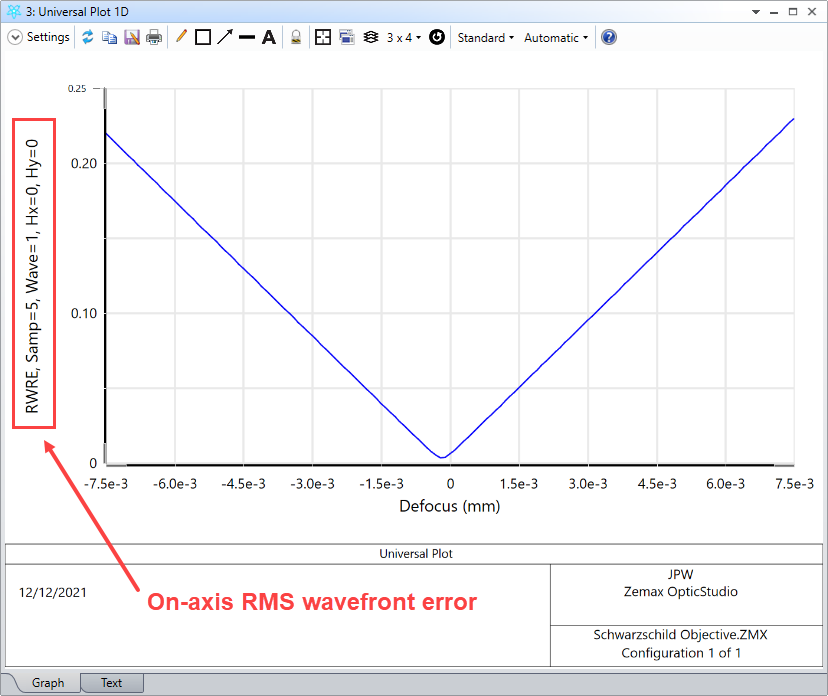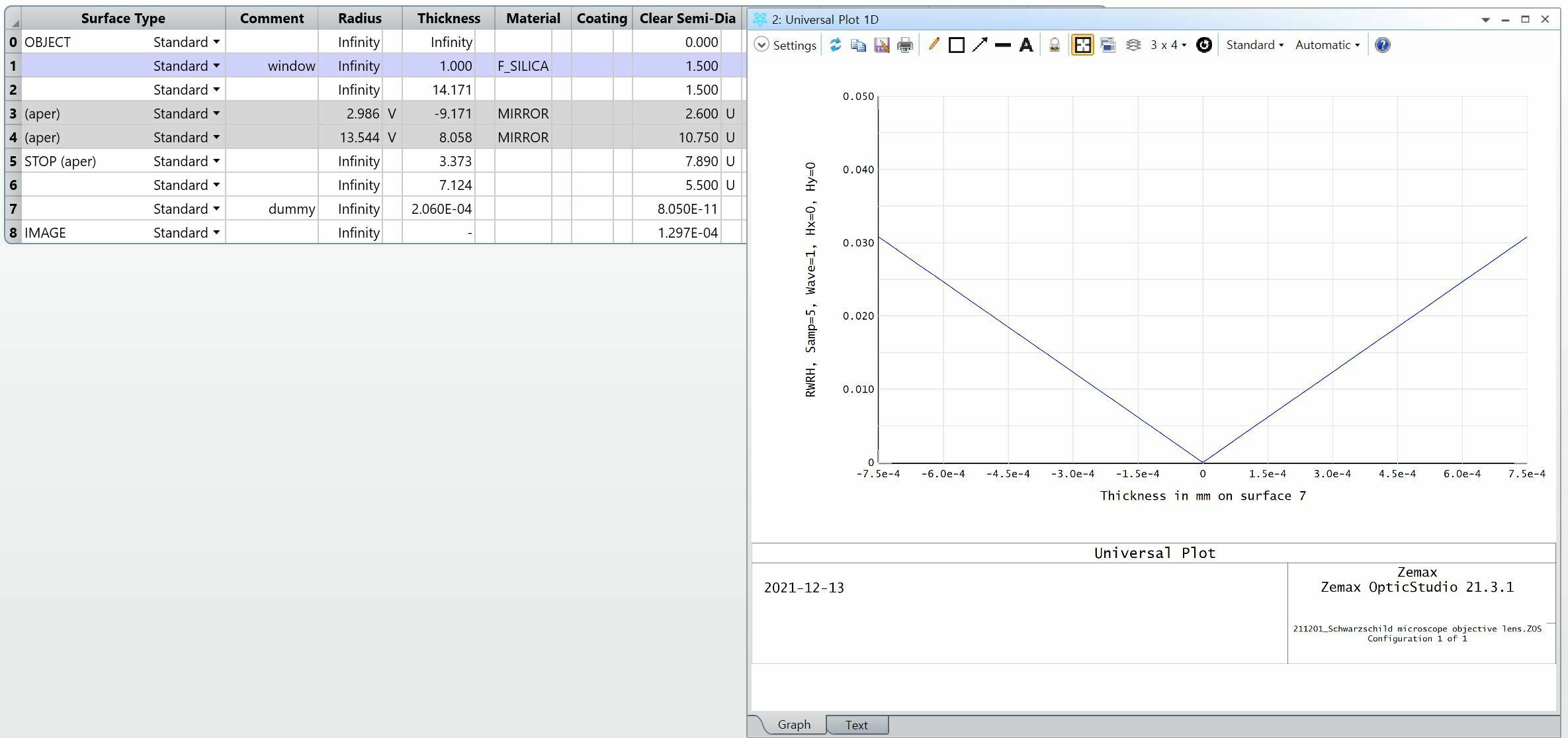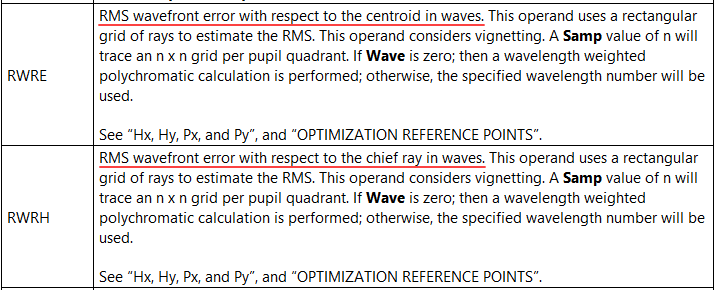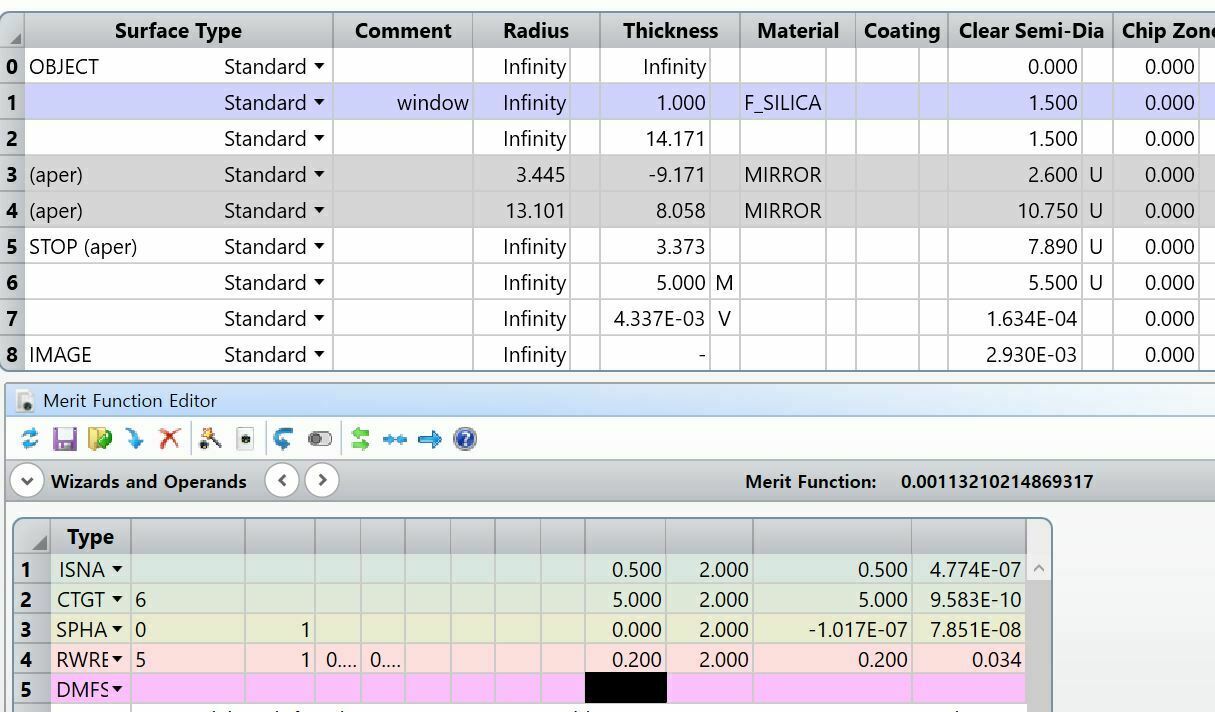Hi ,
I am trying to design a schwarzschild objective mirror.
I’d like to calculate the each DoF(depth of focus) at RMS wavefront error λ/5, λ/10, λ/15, λ/20.
Where λ is 1.03 micrometer.
When using OPDX operand, what should I fill in the “Hx, Hy, Px, Py” and “Target” section?
This is my first that use the Opticstudio, so I don’t know how to change the wavefront error.
Can any one help me?

